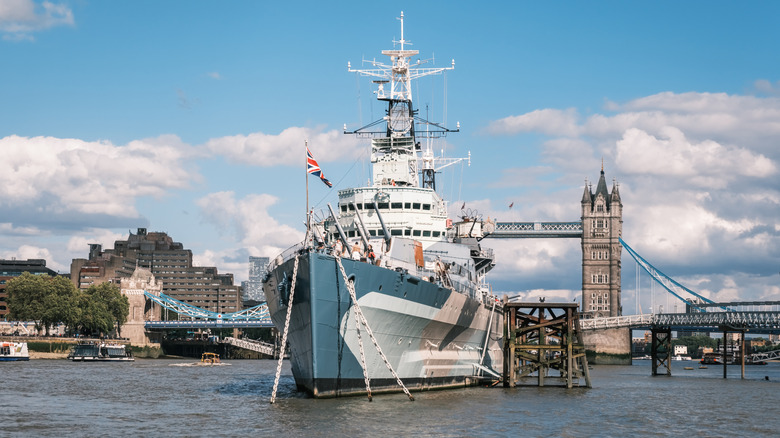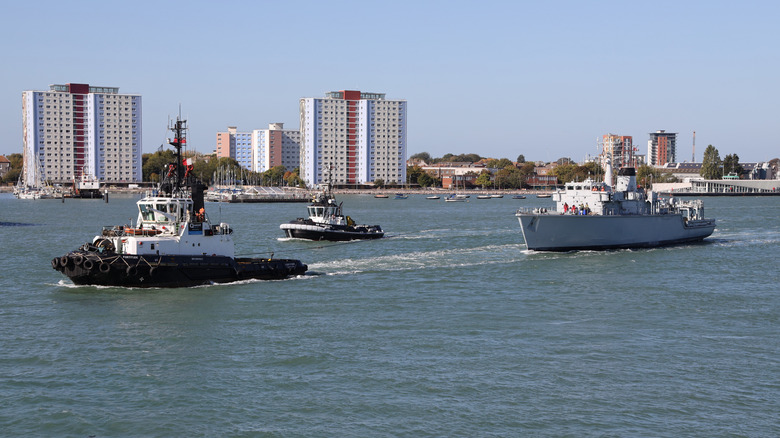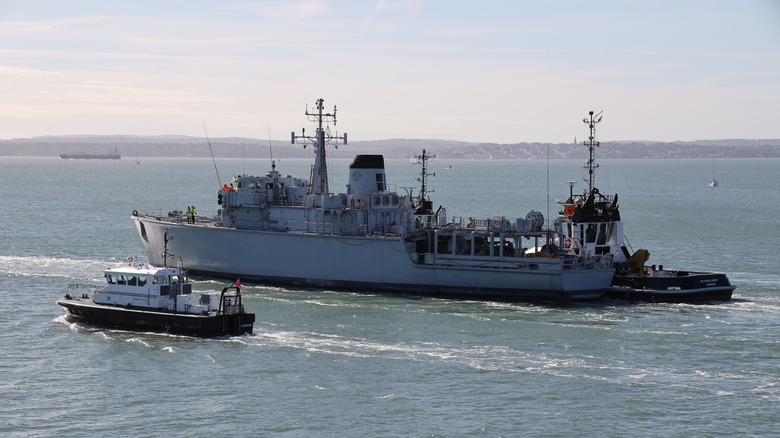How A Miscalculation Gave The Royal Navy A Dangerously Unstable Warship
In 1938, with war looming, the British Royal Navy rushed to fill a gap in its convoy escort capabilities. The result was the Hunt-class destroyers, ships meant to guard slow-moving merchant convoys from submarines and aircraft. But a crucial miscalculation during the design phase nearly turned these ships into a disaster.
The problem began with the decision to base the new escort design on HMS Bittern (wonder why British ships have HMS in their names), a sloop with solid seakeeping but never intended for high-speed escort duties. The designers narrowed the beam and shortened the draught while also increasing engine power to hit 30 knots. Then they mounted three twin 4-inch gun turrets on top, heavy equipment meant for anti-aircraft defense. That mix should have raised red flags, but it didn't.
When HMS Atherstone (the first of the Hunt-class) was completed in early 1940, tests revealed a major issue: she was dangerously unstable. The ship had problems with its center of buoyancy, which is one of the principal forces behind why ships float and rolled badly in moderate seas. In short, she was prone to capsizing. An investigation revealed the design team had mistakenly calculated the center of gravity based on a figure of 7 feet instead of the actual 17 feet. That 10-foot error left out an enormous amount of weight below the waterline.
By the time this was discovered, 20 ships were already ordered or under construction. The mistake wasn't just a math error, it was a system failure that exposed how overstretched and unsupervised Britain's naval architects had become.
Design pressures, bureaucracy, and a rushed fleet
The Hunt-class ships were born from urgency. Britain, despite having some of the deadliest warships in military history, needed convoy escorts, and it needed them fast. The design brief demanded speed, heavy anti-aircraft guns, and the ability to mass-produce the ships cheaply. That's a tall order even in peacetime, but in 1939, it pushed the design team beyond capacity.
Sir Stanley Goodall, the Admiralty's chief naval architect, expressed early doubts. He noted in his diary that the team working on the Hunt class was "poor" and required more supervision. But with multiple ship programs on his desk, oversight fell short. By the time stability tests revealed the flaw in HMS Atherstone, it was too late to cancel the first batch.
To fix the problem in these already laid down ships (known as Type I Hunts), the Royal Navy removed one of the three gun turrets and reduced the superstructure height. They even poured 50 tons of cement into the bottom of the hull for ballast. These compromises reduced effectiveness and undercut the original combat role the ships were meant to fulfill.
Fixes, fallout, and the role they still played
Despite their rocky start, the Hunt-class destroyers were eventually salvaged. Engineers redesigned the hull for the Type II variant, restoring the original three-gun setup by increasing the beam and reinforcing internal weight distribution. A total of 86 Hunts were built in four variants, with adjustments made along the way for armament balance and torpedo integration.
Once operational, the Hunt-class proved useful. They played key roles in protecting convoys in the Mediterranean and Arctic, with their 4-inch guns and depth charges making them versatile escorts. Still, they weren't ideal for long voyages due to fuel limits and cramped quarters. Several were lost in action, and many required months of repairs after taking hits.
What's striking is how avoidable the original design failure was. The miscalculation stemmed from confusing the height of the center of gravity from the keel with the upper deck, a fundamental design metric. Even after the mistake was caught, it went unchecked because a second independent reviewer simply copied the same incorrect number.
The Hunt-class story is a reminder that even minor-seeming errors can spiral into major operational problems, especially when the pressure to deliver outweighs the time to verify. In a different war or under different conditions, that flaw could have sunk ships before they saw combat. Instead, thanks to fast engineering corrections and compromise, a nearly doomed fleet still managed to serve, though not quite as originally intended.


